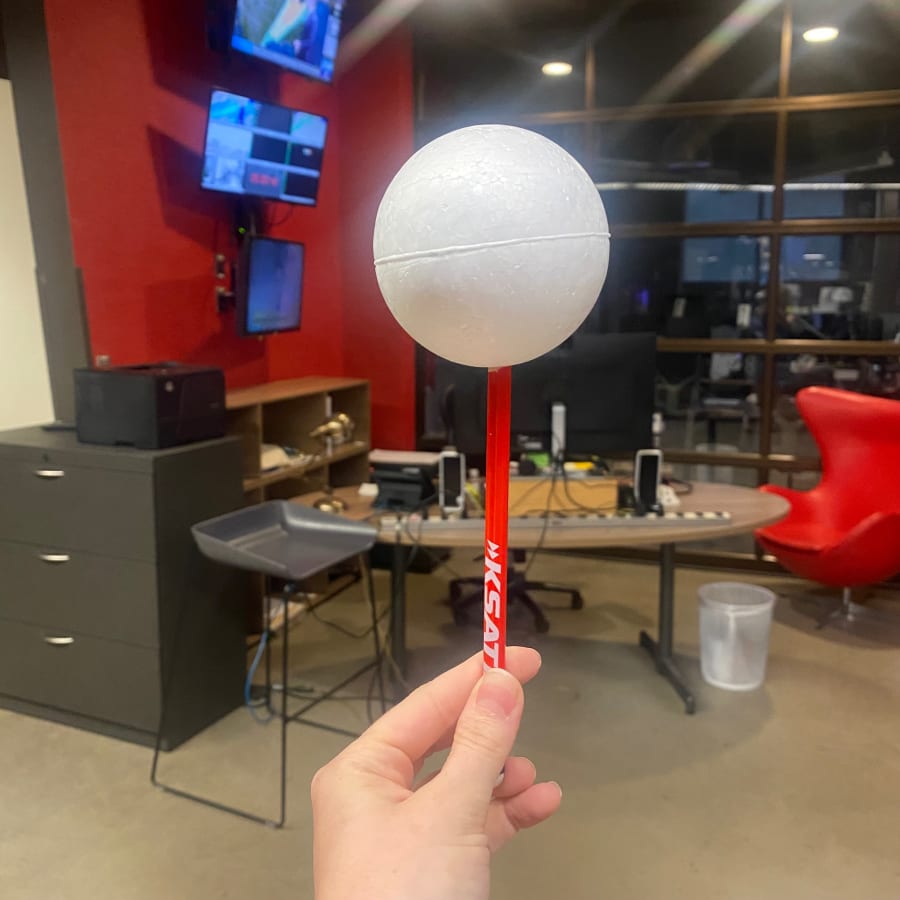👉 Watch the video of Sarah’s school science experiment here!
Hello parents, teachers and students! If you’re looking for fun way to help your students get to know the universe a little better, these experiments are for you!
Be sure to check out GMSA@9 on Wednesdays when Meteorologist Sarah Spivey does the demonstrations and explains the science behind it.

HERE’S WHAT YOU’LL NEED
Expanding Universe Experiment
- Sharpies
- A balloon
- A ruler
Moon Phases Experiment
- A 3 inch diameter styrofoam ball
- A sharp pencil
- A lamp without the lamp shade
DO THE EXPERIMENT(S)
Expanding Universe Experiment
- STEP 1: On the deflated balloon draw a few dots close together. Measure how close the dots are together. You can also add other space-y drawings to the balloon, too!
- STEP 2: Blow up the balloon, tying it closed. Measure how the space between the dots and the drawings have changed.
Moon Phases Experiment
- STEP 1: Place the lamp in the center of a dark room and turn it on
- STEP 2: Push the sharp pencil into the styrofoam ball, and hold it upright. It should look like this ⬇️

- STEP 3: Holding the pencil and styrofoam ball out in front of you, rotate in place. You should see how the light on the styrofoam ball mimics the phases of the moon as you turn around
HOW IT WORKS
Expanding Universe Experiment
When you first drew the dots on the deflated balloon, they were close together. But once inflated, the dots were much farther apart -- this demonstrates our expanding universe.
At one point in history, the universe only took up a small amount of space. But since the beginning of time, the universe has been expanding and is still expanding today. This is why there are such vast distances between objects in space.
Moon Phase Experiment
In this experiment, the styrofoam ball represents the moon and your head represents the earth. When you rotate in place, you’re seeing the light on the “moon” from the perspective of Earth!
SCIENCE WITH SARAH
If you’d like Sarah and David to come to your school and conduct a science experiment live on KSAT, email sciencewithsarah@ksat.com.
Parents and guardians: upload a video of your child performing the activity by clicking here. Send it in and you might see it on GMSA @ 9 a.m.!





